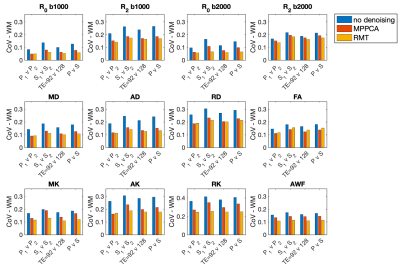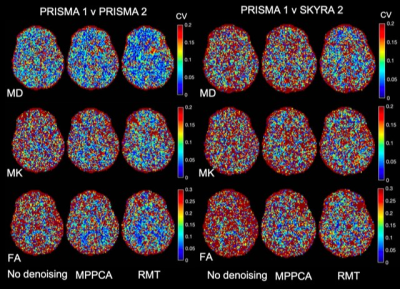Benjamin Ades-Aron1, Santiago Coelho1, Jelle Veraart1, Gregory Lemberskiy1, Genevieve Barroll1, Steven Baete1, Timothy Shepherd1, Dmitry S. Novikov1, and Els Fieremans1
1Radiology, NYU School of Medicine, New York, NY, United States
1Radiology, NYU School of Medicine, New York, NY, United States
This study measures intra-scan, cross-scan, and cross-protocol variability, then evaluates the role
of denoising using MPPCA (magnitude) and RMT (reconstruction from raw data) on the precision of estimating
conventional DTI and higher-order diffusion metrics.

Coefficients of Variation over an ROI of the
posterior limb of the internal capsule for rotational invariants, DTI
parameters, and DKI parameters, averaged over all subjects. P1 v. P2
and S1 v. S2 measure scan-rescan variation. TE=92 v.
TE=128 measure the effect of varying the echo time, CV for Prisma 1 and Prisma 2
scan vs. Prisma 3 scan were averaged. P v. S measure inter-scan variation, where
scans Skyra 1 and Skyra 2 scan vs. Prisma 3 scan (with matched echo times) were
averaged. Rescaling to the voxel
level by $$$1/\sqrt{N voxels}$$$ yields CV ~ 1%.
